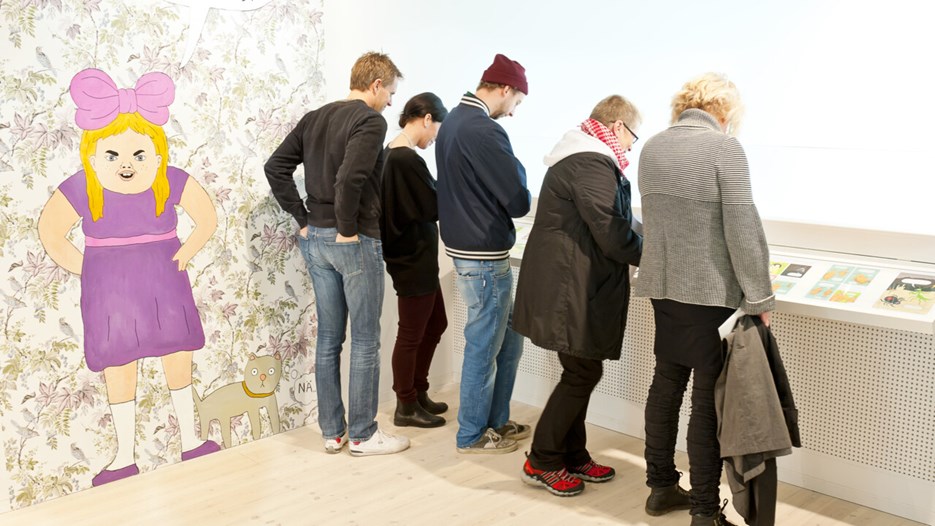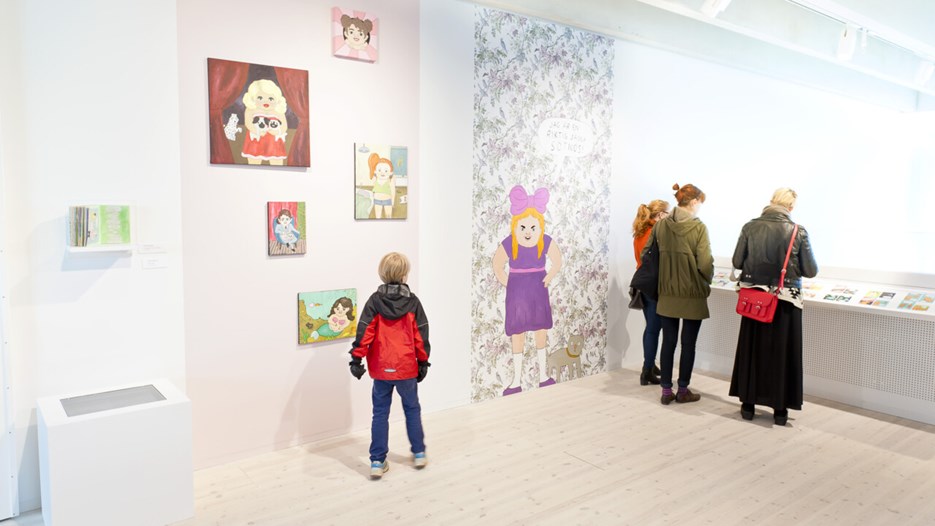
Nanna Johansson / Comics. From the exhibition at Bildmuseet 2012.

Nanna Johansson / Comics. From the exhibition at Bildmuseet 2012.
In her satirical images and texts Nanna Johansson pokes fun at stereotypical gender roles and ideals depicted in popular culture and advertising.
Nanna Johansson (b. 1986) has gained attention for her hilarious and satirical comics. In her humorous images and texts, she pokes fun at the stereotypes of gender roles and ideals that stem from popular culture and advertising. She uses black humour to highlight the confusing world that young people are faced with today.
Nanna Johansson is also a columnist and has worked with radio satire programmes on Swedish Radio P3, Pang Prego and Tankesmedjan. Her comics and illustrations have been published in magazines and newspapers such as ETC, Galago, Sydsvenskan, Bang and Verdens Gang. Earlier in 2012, her third comic book was published, Välkommen till din Psykos (Welcome to your psychosis). In this exhibition, Nanna will showcase a selection of drawings from her comic productions. She has also produced brand new drawings exclusively for Bildmuseet.
Nanna Johansson / Comics
Bildmuseet October 14 - December 2, 2012
When did you start drawing comics?
There is actually a precise starting point - at least when I started drawing "consciously" - spring and summer 2006. It was the months before the election that was to result in at least eight years of right-wing government and I was so terribly sad. I was upset about the politics, the society and the issues being discussed. Something inside me wanted to answer all those idiotic things that were being said but writing letters to the editor has never been my thing. So I started drawing instead, almost like therapy. I drew lots of images and comics that eventually filled my little 19 m² apartment. Eventually I felt that they could just not lie there cluttering the place so I scanned them and started a website. That, in turn led to me getting in contact with lots of other comic artists and becoming aware of Serieskolan in Malmö - where I subsequently spent two years.
What are you interested in achieving with your comics?
It depends on the comic. Sometimes I see a clear message; I have thought about something and want to discuss it with the world around me. Sometimes I just want to entertain. And in between that I do not know what the hell I am doing. The sketchbook I display in the exhibition is a pretty good example of the latter. But I like it anyway.
You have also worked with radio. Are there similarities with what you have done for the radio and your comic drawings?
Yes, absolutely. Some comics I have made have initially been an idea for the radio and vice versa. But in general I usually think that long argumentations, current trend spotting and some types of irony work better on the radio, while more simple, timeless and cogent messages better suit comics. Drawing a comic is a fairly slow process so when it is finally finished, you do not want it to age too quickly.
What can you tell us about the images and comics you are exhibiting at Bildmuseet?
I have tried to challenge myself by working with different techniques. Normally I only draw comics in ink and then I colour them in on the computer, but in this instance I have been playing around with different materials: acrylic, clay, craft peel and stick eyes, newspaper clippings, stickers, and so on. One section only consists of self-portraits - even though no one but me thinks they look like me. I was experimenting with putting myself in different common and unusual female gender roles. If I were to give the self-portraits a common name, it would be "I'm every woman", like the song title.